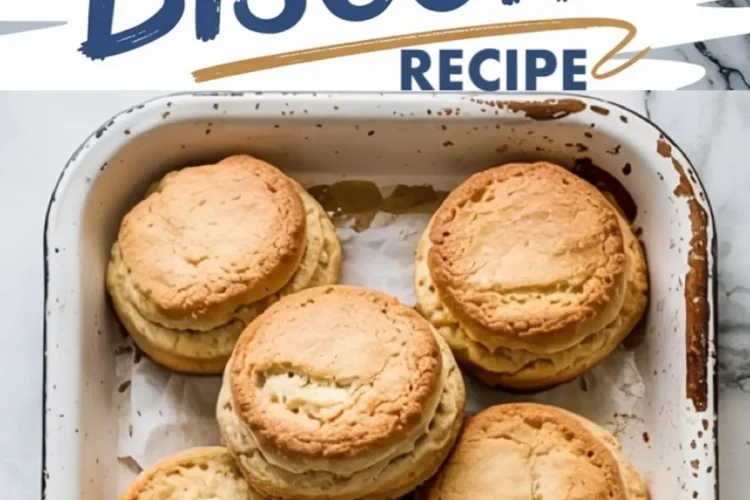Some biscuit recipes give you fluff but no height. Others rise, but taste bland. This one fixes both problems. These buttermilk biscuits are built to rise high and stay tender, with the right kind of layering and the right kind of butter.
You’ll learn exactly how to make tall, flaky biscuits without guessing. And if you’ve had biscuits that turned out flat or tough, you’ll understand why—and how to avoid it.

Why These Buttermilk Biscuits Work
The difference comes down to three things: cold ingredients, proper folding, and the right flour-to-fat ratio.
I’ve baked dozens of versions over the years. I’ve cut butter smaller, then bigger. I’ve tested chilling the dough vs. not. I’ve overmixed on purpose just to see what it does. What you’re getting here is what I’ve kept in my recipe notebook because it works every time.
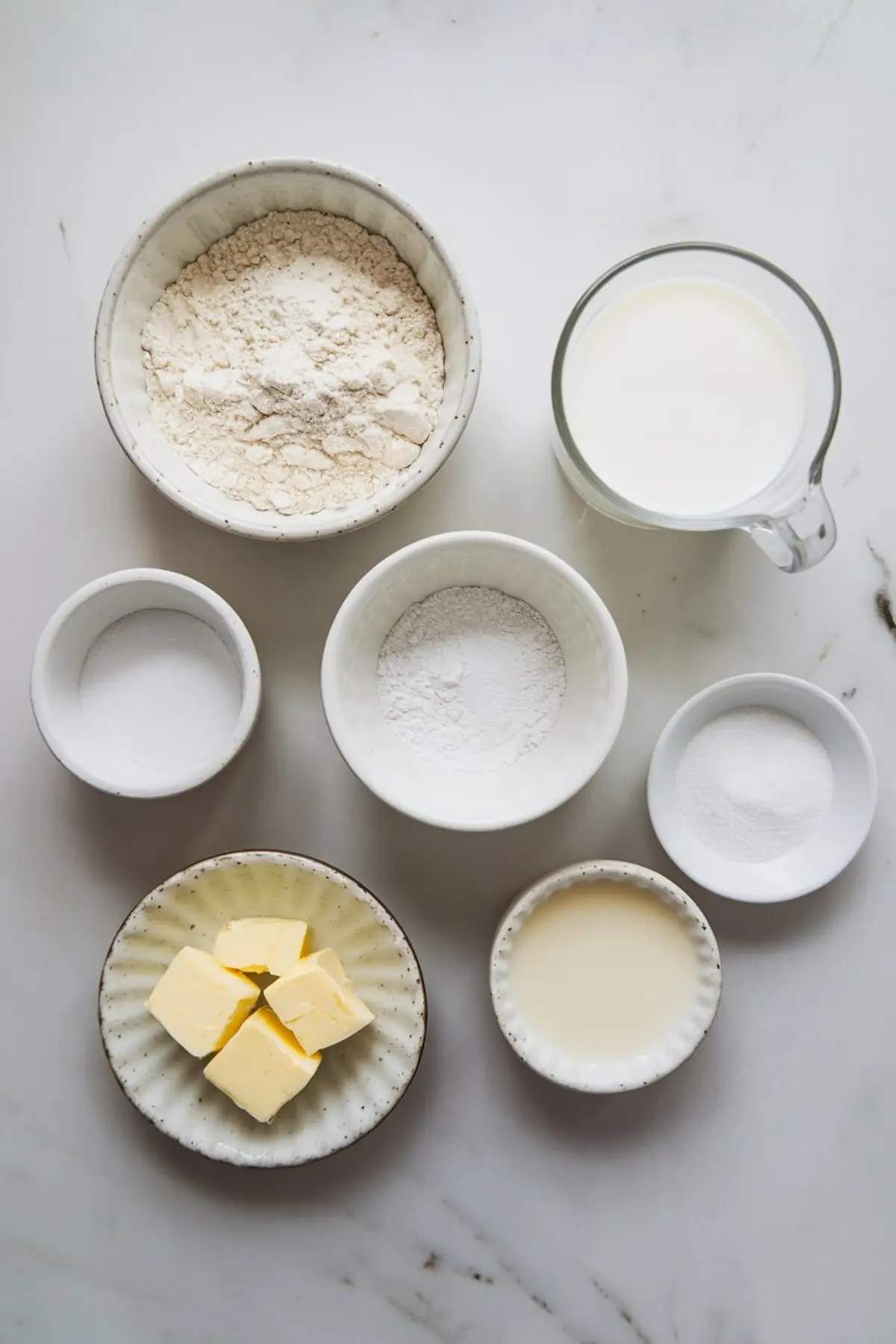
You’ll start with cold butter. That’s your steam engine. Those small cold pieces melt during baking and release steam, which creates lift. Without it, the biscuits stay flat and dense.
Then you’ll use buttermilk. Not milk. Not cream. The acidity reacts with the baking soda and baking powder to boost the rise even more.
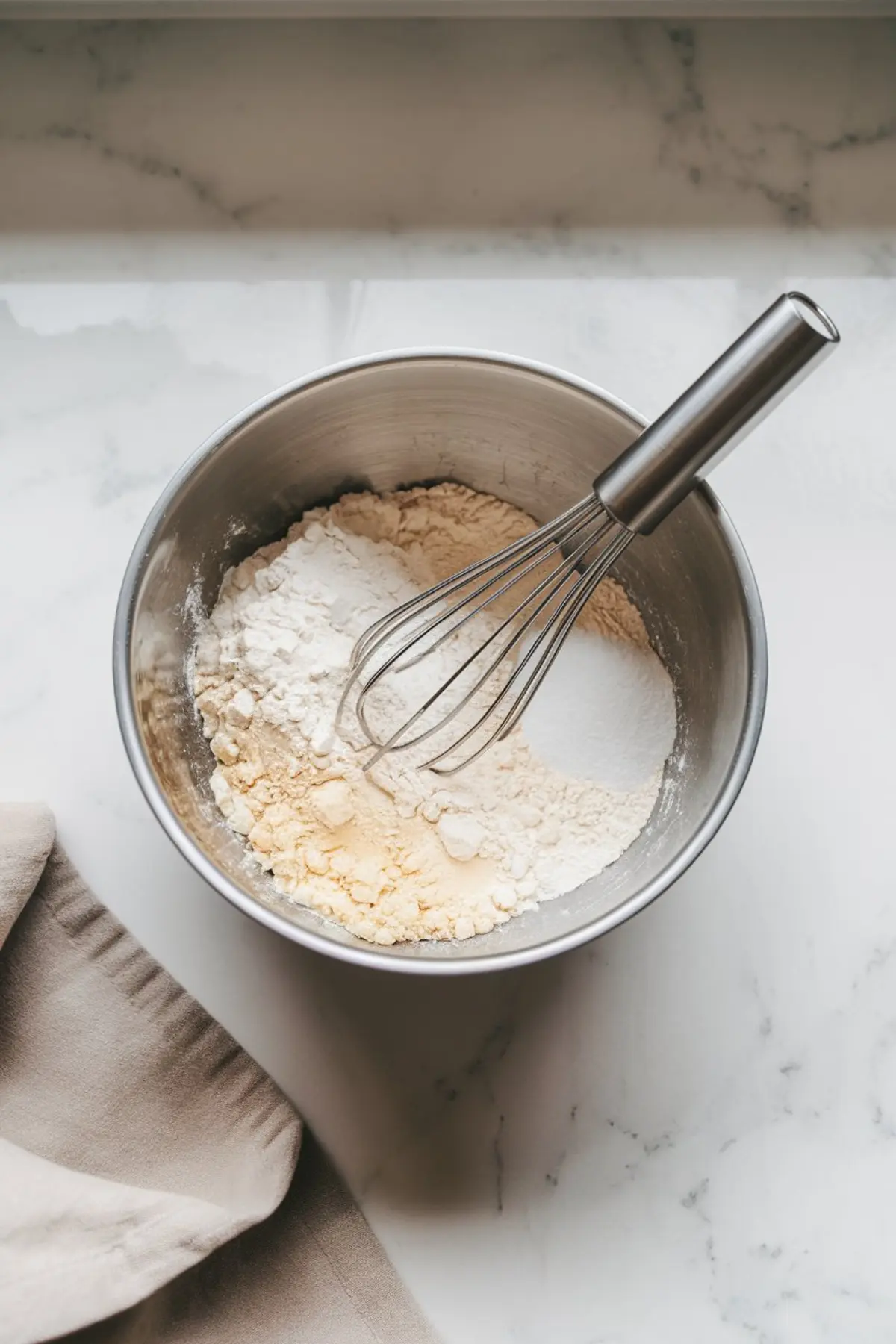
How to Mix Your Biscuit Dough So It’s Not Tough
Overmixing makes biscuits chewy and dry. You want a dough that barely holds together.
When the buttermilk hits the flour and butter, stir gently. I stop as soon as the dough looks shaggy, with dry spots still visible. That’s exactly where you want to stop.
Turn it onto your counter, and you’ll fold it gently to build layers.

How Folding Helps Biscuits Rise Higher
Folding adds layers, which gives you those tall, pull-apart sides you see in a good biscuit.
I press the dough into a rough rectangle, fold it once, and do that again two more times. Don’t use a rolling pin here—your hands are more precise.
If you want soft sides, place the cut biscuits close together. For crisper edges, leave space between them.
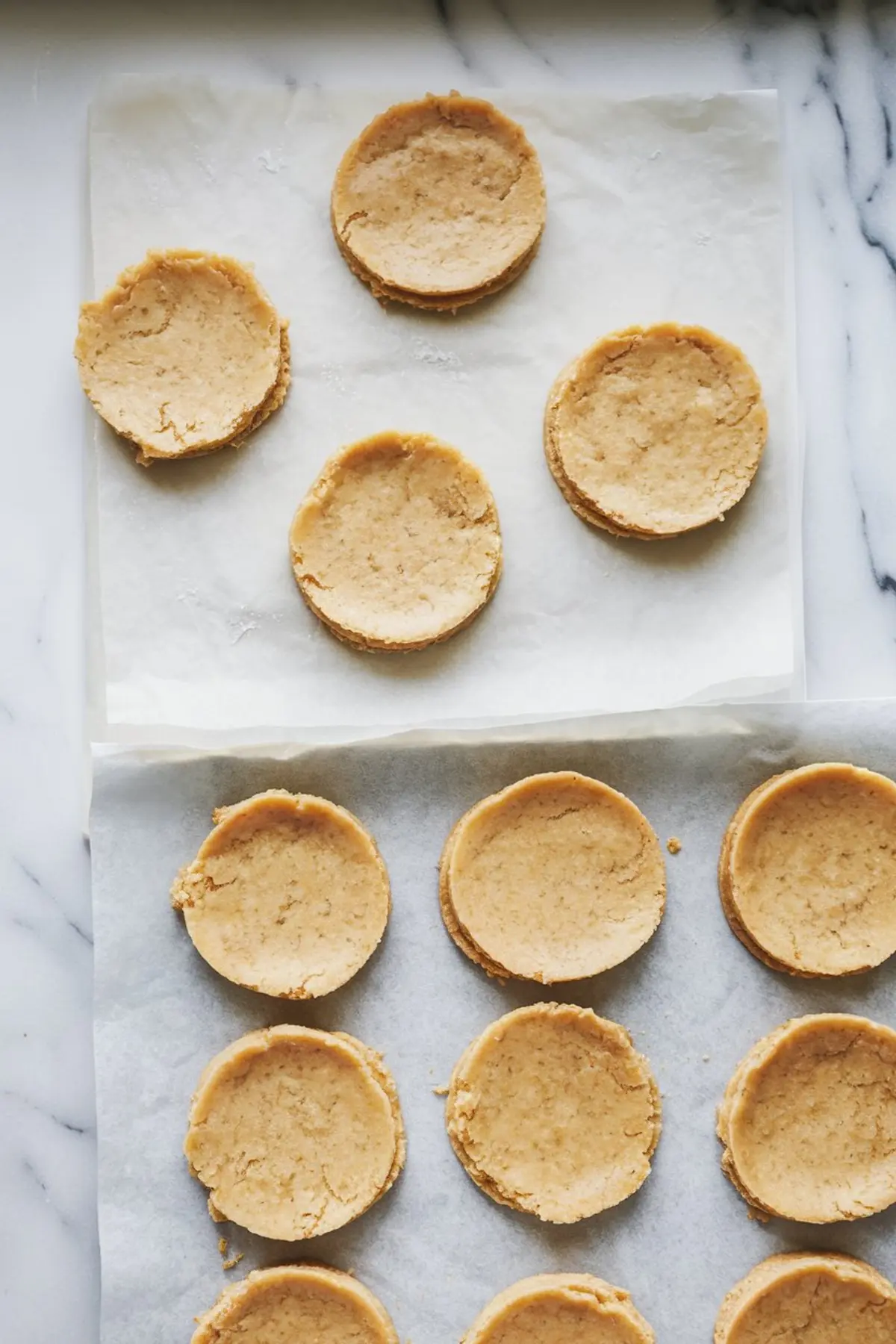
Butter vs. Margarine in Biscuits: One Clear Winner
I’ve tried both. Margarine may seem like a shortcut, but it won’t give you the same steam or flavor.
Butter wins on both rise and taste. I cube it and freeze it briefly before using. That way, it stays solid until it hits the oven.
Serving Notes: What to Pair These Biscuits With
Fresh from the oven, these biscuits need little else. I serve them with soft butter or honey. If I’m making them for brunch, I’ll add fried eggs and tomato jam. For dinner, they go alongside roasted chicken or a creamy soup.
You could even make a dessert out of them with sweetened whipped cream and berries.
How to Store and Reheat for Best Texture
Once they cool, wrap them tightly and store them at room temperature for up to 2 days. After that, move them to the freezer.
To reheat, warm them in a 350°F oven for 5 to 7 minutes. Skip the microwave—it softens them too much.
More Biscuits and Cookie Recipes You’ll Love
If this recipe hit the mark for you, try my Coconut Mango Cookies or the Peanut Butter Chocolate Chip Cookies next.
And if you want to explore chocolate depth, the Brown Butter Chocolate Chip Cookies always get compliments.
For something colorful and slightly earthy, don’t miss the Strawberry Matcha Marble Cookies.
Or go bold with the Coconut Espresso Cookies.
Pin and Share Your Bake

If these biscuits turned out well for you, save this to your Pinterest board so you have it handy next time.
And let me know in the comments how yours turned out—or if you made any tweaks. I’d love to hear what you tried.
Easy Biscuit Recipe
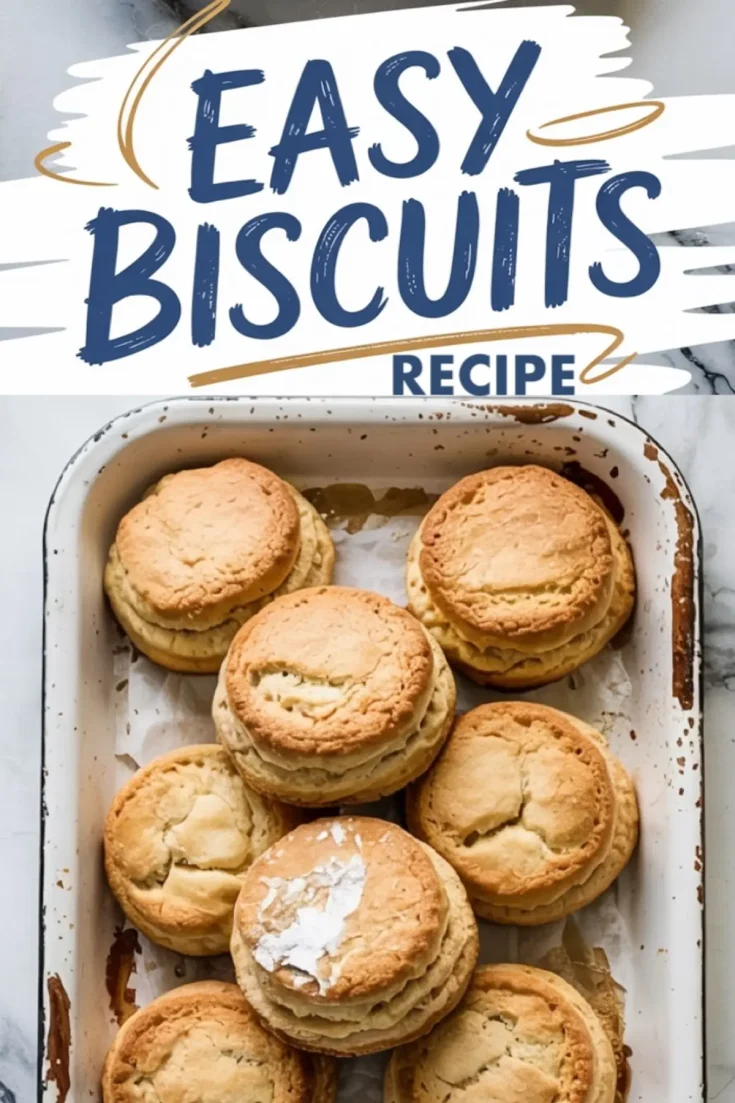
2 cups (250g) all-purpose flour
1 tablespoon baking powder
½ teaspoon baking soda
1 teaspoon salt
6 tablespoons (85g) unsalted butter, very cold and cubed
¾ cup (180ml) cold buttermilk, plus more for brushing tops
1 tablespoon sugar (optional, for slightly sweet biscuits)
Melted butter for brushing after baking (optional)
Ingredients
- 2 cups (250g) all-purpose flour
- 1 tablespoon baking powder
- ½ teaspoon baking soda
- 1 teaspoon salt
- 6 tablespoons (85g) unsalted butter, very cold and cubed
- ¾ cup (180ml) cold buttermilk, plus more for brushing tops
- 1 tablespoon sugar (optional, for slightly sweet biscuits)
- Melted butter for brushing after baking (optional)
Instructions
- PREHEAT THE OVEN: Set your oven to 425°F (220°C) and line a baking sheet with parchment paper to prevent sticking.
- MIX THE DRY INGREDIENTS: In a large mixing bowl, whisk together the flour, baking powder, baking soda, and salt. If using sugar, add it now and mix well.
- INCORPORATE THE BUTTER: Add the cold, cubed butter to the dry ingredients. Use a pastry cutter or your fingertips to blend the butter into the flour until the mixture resembles coarse crumbs with visible pea-sized pieces of butter.
- ADD THE BUTTERMILK: Pour in the cold buttermilk and use a spatula or wooden spoon to gently stir until the dough just begins to come together. Do not overmix, as this can lead to tough biscuits.
- FOLD THE DOUGH: Turn the dough out onto a lightly floured surface. Gently pat it into a rectangle about 1-inch thick. Fold the dough in half, pat it down again, and repeat the folding process a total of 3 times to create layers.
- SHAPE AND CUT: Pat or roll the dough to about ¾-inch thickness. Use a round biscuit cutter to cut out biscuits, pressing straight down without twisting. Re-roll scraps once and cut again as needed.
- ARRANGE AND BAKE: Place the biscuits close together on the prepared baking sheet for soft sides or space them apart for crisper edges. Brush the tops with a little extra buttermilk. Bake for 13 to 15 minutes, or until the tops are golden brown and the biscuits are fully risen.
- FINISH AND SERVE: While the biscuits are still warm, brush the tops with melted butter if desired. Serve immediately with butter, jam, or honey.
Notes
For best results, keep all ingredients cold. Cold butter and buttermilk help the biscuits rise tall and flaky. Avoid overworking the dough to maintain a tender texture.
Nutrition Information
Yield
24Serving Size
1Amount Per Serving Calories 321Total Fat 15gSaturated Fat 6gTrans Fat 0gUnsaturated Fat 7gCholesterol 7mgSodium 402mgCarbohydrates 42gFiber 2gSugar 3gProtein 5g

